#ethiopian
Text
Naming International POC Characters: Do Your Research.
This post is part of a double feature for the same ask. First check out Mod Colette's answer to OP's original question at: A Careful Balance: Portraying a Black Character's Relationship with their Hair. Below are notes on character naming from Mod Rina.
~ ~ ~
@writingraccoon said:
My character is black in a dungeons and dragons-like fantasy world. His name is Kazuki Haile (pronounced hay-lee), and his mother is this world's equivalent of Japanese, which is where his first name is from, while his father is this world's equivalent of Ethiopian, which is where his last name is from. He looks much more like his father, and has hair type 4a. [...]
Hold on a sec.
Haile (pronounced hay-lee), [...] [H]is father is this world’s equivalent of Ethiopian, which is where his last name is from.
OP, where did you get this name? Behindthename.com, perhaps?

Note how it says, “Submitted names are contributed by users of this website. Check marks indicate the level to which a name has been verified.” Do you see any check marks, OP?
What language is this, by the way? If we only count official languages, Ethiopia has 5: Afar, Amharic, Oromo, Somali, & Tigrinya. If we count everything native to that region? Over 90 languages. And I haven't even mentioned the dormant/extinct ones. Do you know which language this name comes from? Have you determined Kazuki’s father’s ethnic group, religion, and language(s)? Do you know just how ethnically diverse Ethiopia is?
~ ~ ~
To All Looking for Character Names on the Internet:
Skip the name aggregators and baby name lists. They often do not cite their sources, even if they’re pulling from credible ones, and often copy each other.
If you still wish to use a name website, find a second source that isn’t a name website.
Find at least one real life individual, living or dead, who has this given name or surname. Try Wikipedia’s lists of notable individuals under "List of [ethnicity] people." You can even try searching Facebook! Pay attention to when these people were born for chronological accuracy/believability.
Make sure you know the language the name comes from, and the ethnicity/culture/religion it’s associated with.
Make sure you understand the naming practices of that culture—how many names, where they come from, name order, and other conventions.
Make sure you have the correct pronunciation of the name. Don’t always trust Wikipedia or American pronunciation guides on Youtube. Try to find a native speaker or language lesson source, or review the phonology & orthography and parse out the string one phoneme at a time.
Suggestions for web sources:
Wikipedia! Look for: “List of [language] [masculine/feminine] given names,” “List of most common [language] family names,” “List of most common surnames in [continent],” and "List of [ethnicity] people."
Census data! Harder to find due to language barriers & what governments make public, but these can really nail period accuracy. This may sound obvious, but look at the year of the character's birth, not the year your story takes place.
Forums and Reddit. No really. Multicultural couples and expats will often ask around for what to name their children. There’s also r/namenerds, where so many folks have shared names in their language that they now have “International Name Threads.” These are all great first-hand sources for name connotations—what’s trendy vs. old-fashioned, preppy vs. nerdy, or classic vs. overused vs. obscure.
~ ~ ~
Luckily for OP, I got very curious and did some research. More on Ethiopian & Eritrean naming, plus mixed/intercultural naming and my recommendations for this character, under the cut. It's really interesting, I promise!
Ethiopian and Eritrean Naming Practices
Haile (IPA: /həjlə/ roughly “hy-luh.” Both a & e are /ə/, a central “uh” sound) is a phrase meaning “power of” in Ge’ez, sometimes known as Classical Ethiopic, which is an extinct/dormant Semitic language that is now used as a liturgical language in Ethiopian churches (think of how Latin & Sanskrit are used today). So it's a religious name, and was likely popularized by the regnal name of the last emperor of Ethiopia, Haile Selassie (“Power of the Trinity”). Ironically, for these reasons it is about as nationalistically “Ethiopian” as a name can get.
Haile is one of the most common “surnames” ever in Ethiopia and Eritrea. Why was that in quotes? Because Ethiopians and Eritreans don’t have surnames. Historically, when they needed to distinguish themselves from others with the same given name, they affixed their father’s given name, and then sometimes their grandfather’s. In modern Ethiopia and Eritrea, their given name is followed by a parent’s (usually father’s) name. First-generation diaspora abroad may solidify this name into a legal “surname” which is then consistently passed down to subsequent generations.
Intercultural Marriages and Naming
This means that Kazuki’s parents will have to figure out if there will be a “surname” going forward, and who it applies to. Your easiest and most likely option is that Kazuki’s dad would have chosen to make his second name (Kazuki’s grandpa’s name) the legal “surname.” The mom would have taken this name upon marriage, and Kazuki would inherit it also. Either moving abroad or the circumstances of the intercultural marriage would have motivated this. Thus “Haile” would be grandpa’s name, and Kazuki wouldn’t be taking his “surname” from his dad. This prevents the mom & Kazuki from having different “surnames.” But you will have to understand and explain where the names came from and the decisions dad made to get there. Otherwise, this will ring culturally hollow and indicate a lack of research.
Typically intercultural parents try to
come up with a first name that is pronounceable in both languages,
go with a name that is the dominant language of where they live, or
compromise and pick one parent’s language, depending on the circumstances.
Option 1 and possibly 3 requires figuring out which language is the father’s first language. Unfortunately, because of the aforementioned national ubiquity of Haile, you will have to start from scratch here and figure out his ethnic group, religion (most are Ethiopian Orthodox and some Sunni Muslim), and language(s).
But then again, writing these characters knowledgeably and respectfully also requires figuring out that information anyway.
~ ~ ~
Names and naming practices are so, so diverse. Do research into the culture and language before picking a name, and never go with only one source.
~ Mod Rina
#asks#language#languages#linguistics#east africa#african#immigration#ethiopian#names#naming#research#resources#writeblr#character names#character name ideas#rina says read under the cut. read it
3K notes
·
View notes
Text
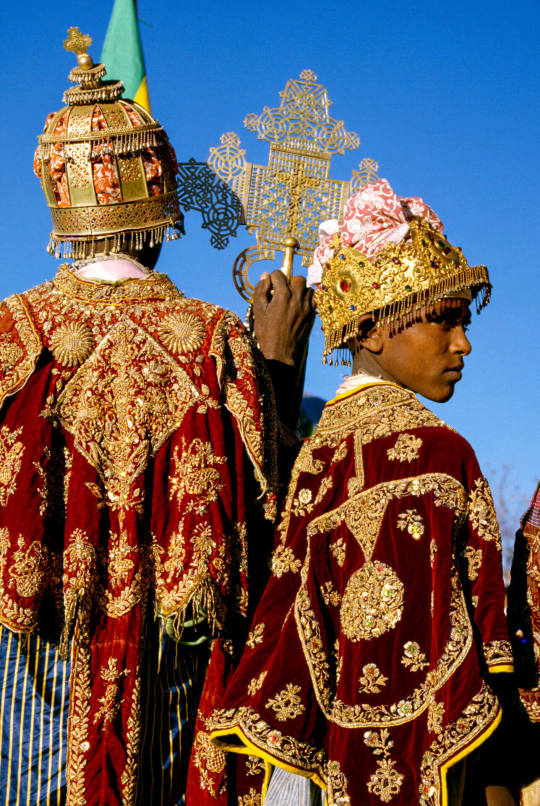
Ethiopian Christians devotees, Ethiopia, by Africa Online Museum
#ethiopian#ethiopia#africa#folk clothing#traditional clothing#traditional fashion#cultural clothing#eastern africa
879 notes
·
View notes
Text

#african#afrakan#kemetic dreams#africans#brownskin#brown skin#afrakans#african culture#Ethiopian#Ethiopia#Amhara#oromo#east africa#epic video
332 notes
·
View notes
Text



#melanin#pretty#blackgirlmagic#ethiopian#habesha#melanin poppin#african beauty#modest#modesty#womens fashion#black queen#black fashion#ebony#chocolate#brown skin#east africa#african
621 notes
·
View notes
Text


📷 konjiole
#konjiole#ethiopia#Ethiopian#habesha#beautiful#lovely#instamodel#blackisbeautiful#blackgirlmagic#swimsuit#ebony#black women#black girl magic#bikini
434 notes
·
View notes
Photo

"Andromeda" by Samantha Cockrum
#art#print#illustration#artist#samantha cockrum#portrait#black#constellation#mythology#queen#galaxy#greek mythology#andromeda#african#black girl magic#ethiopian#andromedas
801 notes
·
View notes
Text
#food#foodie#cuisine#French#Thai#vietnam#america#mexican#japanese#Ethiopian#Greek#indian#poll#random polls#china#chinese
126 notes
·
View notes
Photo

“Postes Ethiopiness of the Cape of Good Hope”
— Artist: BANTOCKart
238 notes
·
View notes
Text

Ayo Leilani / Witch Prophet (Etmet Musa)
Gender: Female
Sexuality: Lesbian
DOB: 8 October 1982
Ethnicity: Ethiopian, Eritrean
Nationality: Canadian
Occupation: Singer, songwriter, musician
#Ayo Leilani#Witch Prophet#Etmet Musa#lesbianism#sapphic#lgbtq#female#lesbian#1982#black#african#Ethiopian#Eritrean#canadian#poc#singer#songwriter#musician
63 notes
·
View notes
Text

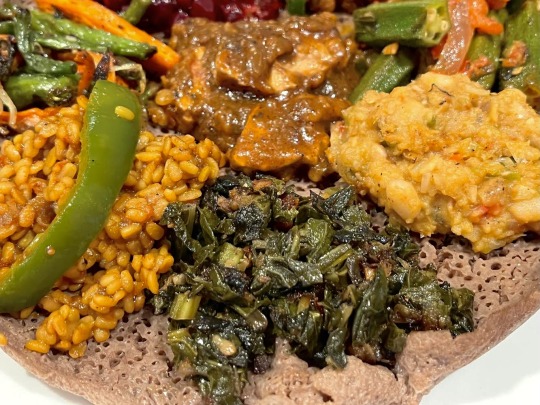
[ID: First image is bowl of collard greens with tomato and sliced jalepeño; second image shows several Ethiopian vegetable dishes on a piece of injera. End ID]
ጎመን / Gomen (Ethiopian collard greens)
This wot, or stew, consists of leafy greens that are cooked until tender with onion, garlic, ginger, tomato, and spices including korerima (Ethiopian false cardamom) and tikur azmud (nigella seeds). The result is a robust, flavorful side dish with an intensely aromatic finish.
Recipe under the cut!
Patreon | Tip jar
Ingredients:
12oz (340g) collard greens, kale, or other bitter greens, washed
1/4 cup avocado or sunflower oil, or other neutral oil
1 red onion, chopped or grated
2 cloves garlic, chopped
1 1/2 tsp minced ginger
1 tomato, minced
1 tsp cumin seeds, toasted and ground
1 tsp coriander seeds, toasted and ground
1/2 tsp Ethiopian false cardamom (korerima / ኮረሪማ; Aframomum melegueta), toasted and ground
1 tsp nigella seeds (tikur azmud / ጥቁር አዝሙድ; Nigella sativa), toasted and ground
1 jalapeño, sliced
Salt to taste (about 3/4 tsp table salt)
Mitmita (ሚጥሚጣ), to taste (see notes at end)
For more information on Ethiopian herbs and spices, including suggested substitutions, see the notes at the end of my berbere recipe.
Some recipes include niter kibbeh (ንጥር ቅቤ) in Ethiopian vegetable dishes such as gomen; this isn't typical, but you may add a teaspoon or so at the end of the cooking time if you have some lying around!
Instructions:
1. If using collard greens, discard any yellow leaves. Bend the end of each stem backwards and peel away the string that emerges. If the stems are stiff, remove them; if they are tender, they may be minced and included in the dish. Dice greens (finer than I did in the picture!).
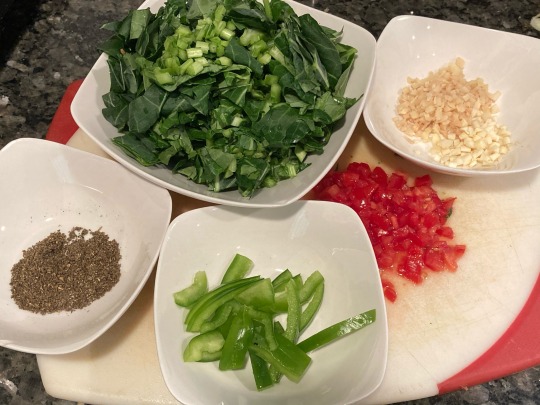
2. Heat onion, tomato, about a third of the garlic, and a pinch of salt in a dry pot on medium heat. Continue to cook, stirring and scraping the bottom of the pot often, until tomato is softened and onion is translucent.
Beginning the cooking process without oil is traditional in Ethiopia, but if you’re worried that they may stick, you may heat a little oil in the pot before adding the onion, tomato, and garlic.
3. Add oil and sauté, stirring occasionally, for about 10 minutes, until mixture is very soft and homogenous. Lower heat it ncessary.
4. Add ginger and another third of the garlic and sauté for about 30 seconds, until no longer raw-smelling.
5. Add ground spices and a couple tablespoons of water. Heat until simmering and add chopped greens.
6. Cover and cook, stirring occasionally, until tender (about 20-30 minutes).
7. Add salt to taste, jalepeño, and the remainder of the garlic and cook for another couple minutes.
Serve warm as a side with injera, misir wat, doro wat, etc.
For the mitmita:
Mitmita is a spicy seasoning mix that may be included in Ethiopian dishes, or served at the table as a condiment. Preparations differ, but recipes usually include chili, korerima, and cloves, and may also include cumin, green cardamom, allspice, black pepper, cinnamon, or garlic powder.
Ingredients:
20 dried bird's-eye chili peppers (piri piri)
2 Tbsp cumin seeds (optional)
1 Tbsp korerima seeds
1 Tbsp green cardamom pods (optional)
2 tsp whole cloves
1-inch piece Ceylon cinnamon (optional)
Bags of bird's-eye chili peppers can be purchased at a halal grocery store, where they will likely be a product of India or Thailand; they may not be labelled "bird's-eye," but look for the small size and curved shape.
Instructions:
Toast spices one at a time in a small dry skillet on medium heat until fragrant. Allow to cool completely and then grind in a spice mill or using a mortar and pestle. Store in an airtight jar in a cool, dry place.
#Ethiopian#vegan recipe#vegan cooking#vegan recipes#ethiopian food#collard greens#kale#cooking#gluten free
116 notes
·
View notes
Text
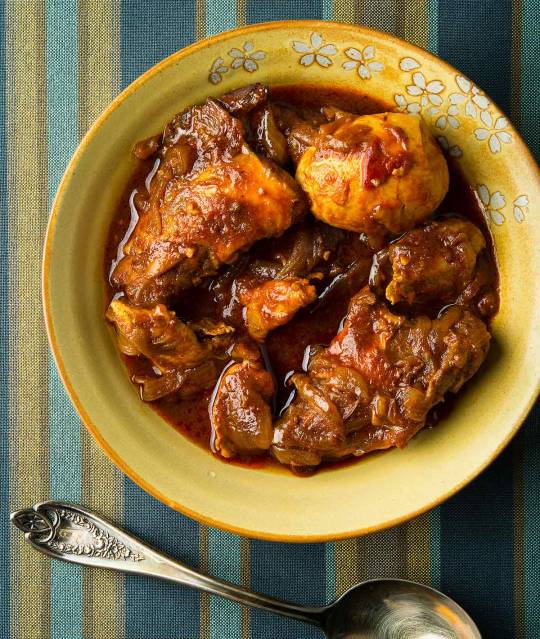
Doro Wat
#food#recipe#dinner#doro wat#stew#berbere#chicken#onions#tomatoes#ginger#garlic#lemon#fenugreek#eggs#ethiopian#gluten free
111 notes
·
View notes
Text
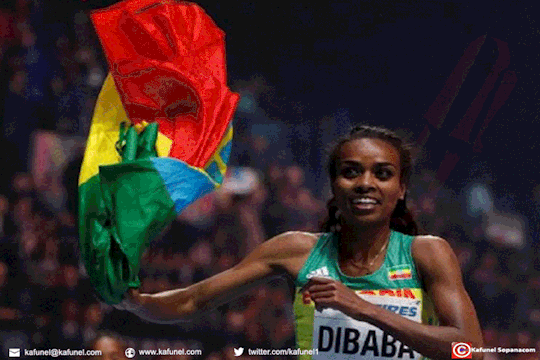
#african#afrakan#kemetic dreams#africans#brownskin#afrakans#brown skin#fitness#african culture#eskista#habesha#Ethiopian#epic video
241 notes
·
View notes
Text

🍑🥰
22 notes
·
View notes
Text



#melanin#pretty#blackgirlmagic#melanin poppin#african beauty#black fashion#black queen#brown skin#chocolate#modesty#muslim fashion#womens fashion#ethiopian#ebony#beautiful skin#black beauty#beautiful women#luxury#hijabfashion#east africa#ebony queen#black women#black is beautiful#ebony goddess#tumblr girls#black tumblr#brown beauty#head wrap#modest
608 notes
·
View notes

